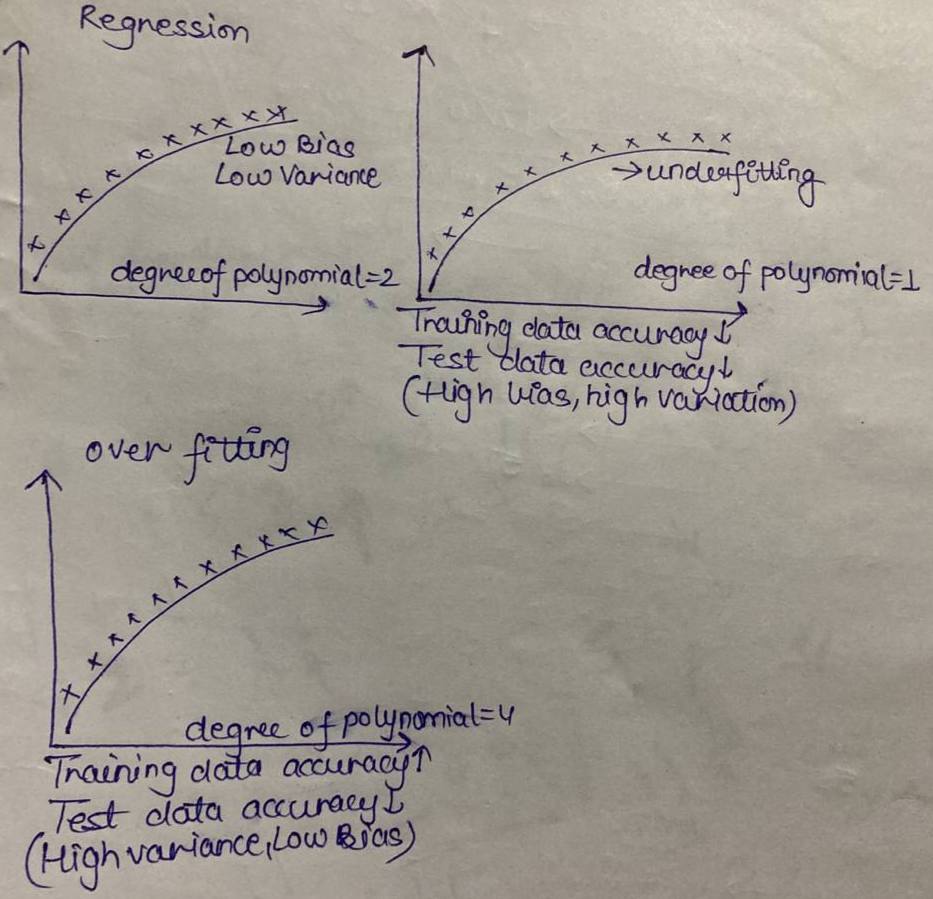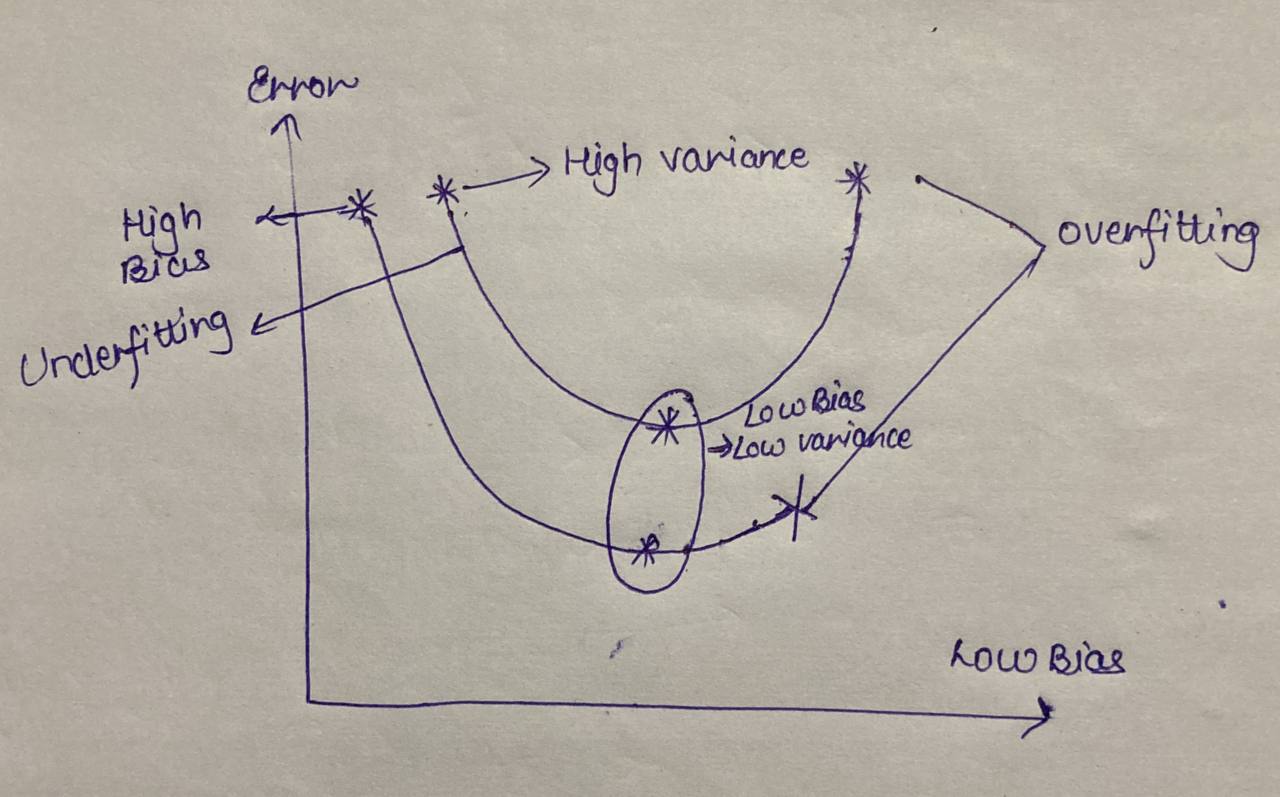Bias vs Variance: A Tradeoff
 Krishna Kapoor
Krishna Kapoor
Bias
The bias-variance tradeoff is a fundamental concept in machine learning and statistics that relates to the performance of predictive models. It represents the tradeoff between the bias(underfitting) and variance(overfitting) of a model.
Bias is considered a systematic error that occurs in the machine learning model itself due to incorrect presumptions in the model process.
Bias refers to an error introduced by approximating a real-world problem with a simplified model. In the other word, bias is the difference between the model prediction and the actual ground truth. A model with high bias is too simplistic and is unable to capture the complexity of the data, thereby resulting in underfitting. Models with high bias include:
Over Simplified
High Error Rate
Underfitting
Variance
Variance refers to the amount of fluctuation in a model prediction for a given input, as training data changes. Specifically, it measures how much the predicted values differ from the ground truth. A model with high variance will perform well on training data because it tends to memorize the training data instead of learning the underlying patterns. As a result, for unseen and new data, it performs poorly. Now the model has learned to fit the noise in the training data too closely, due to overfitting. Models with high variance include:
Noise in the dataset
Overfitting
Complex model
The bias-variance tradeoff arises from the fact that decreasing bias often leads to an increase in variance, and vice versa. Finding the right balance is crucial to building models that can generalize well to unseen data.

Overfitting and Underfitting
These are the terms that are very important in machine learning and training models. The fitting of a model directly correlates to whether it will return predictions from a given dataset.
Overfitting
Intuitively, overfitting occurs when a model or the algorithm fits the data too well. More precisely, overfitting occurs if the model or an algorithm shows low bias and high variance. This can occur due if the model is too complex, the training dataset is too small or the model is trained for long. Overfitting can be identified by good performance on the training data but poor performance on test data.
Underfitting
It occurs when the model is too simple to capture the complexity of the data, but cannot capture the underlying trend in the dataset. This can occur if the model is trained for a long. More precisely, underfitting occurs if the model or an algorithm shows high bias and low variance. Underfitting can be identified by the poor performance on both the train and test data.
Bias Variance Tradeoff
Bias and variance are inversely proportional to each other. It is impossible to have a model with low bias and low variance.
Importantly, it is noted that having a high variance doesn't indicate that the machine-learning model is bad. ML model must be able to handle some increased variance.

Importance of Bias and Variance
Understanding the bias-variance tradeoff is crucial for model selection, hyperparameter tuning and assessing the overall performance of machine learning algorithms. Bias and variance are two key important components for developing good and accurate machine learning models.
Generally, the goal is to keep bias as low as possible with an acceptable level of variance. By finding the right balance, one can develop models that generalize well to new data and make accurate predictions.
Thanks for reading the blog!!! If you find this blog useful and interesting do like.
Thanks a lot again !!!
Subscribe to my newsletter
Read articles from Krishna Kapoor directly inside your inbox. Subscribe to the newsletter, and don't miss out.
Written by

Krishna Kapoor
Krishna Kapoor
Hi there! I'm Krishna, currently pursuing BTECH in Machine Learning, who is passionate about machine learning, problem solving, data structures and backend. I enjoy exploring new technologies and experimenting with new tools, and I'm excited to share my findings and learning with the community. I believe that learning is a continuous process. Thanks for stopping by, and I look forward to connecting with you!